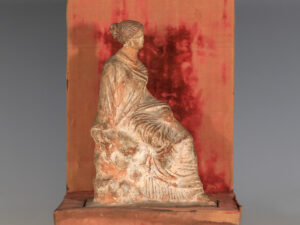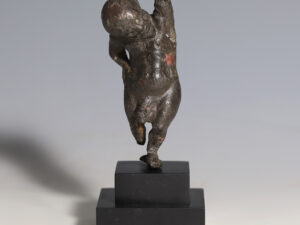Terracotta statuettes such as this beautiful example, were potted in a specific region in north Attica, Boeotia, famous for its terracotta production of votive statuettes and figurines. Terracotta figurines are the most common sculpture types found in Greek art, including across Hellenistic sites. They vary from simple crude figures to finely rendered creations. Although present in a variety of different circumstances, a common usage was as a votive offering in funerary and sanctuary contexts. Terracotta figures were cheap to make and easily replicable, making them well suited for this purpose. All Greek sculptural production was originally polychrome. Few examples of statues and statuettes have come down to modern times in their original condition with their polychromy intact.
To find out more about votive offerings and polychromy in ancient art, please read our relevant blog posts: Ancient Greek Votive Offerings in Antiquity: Gifts to the Gods Polychromy in Ancient Greece.



















